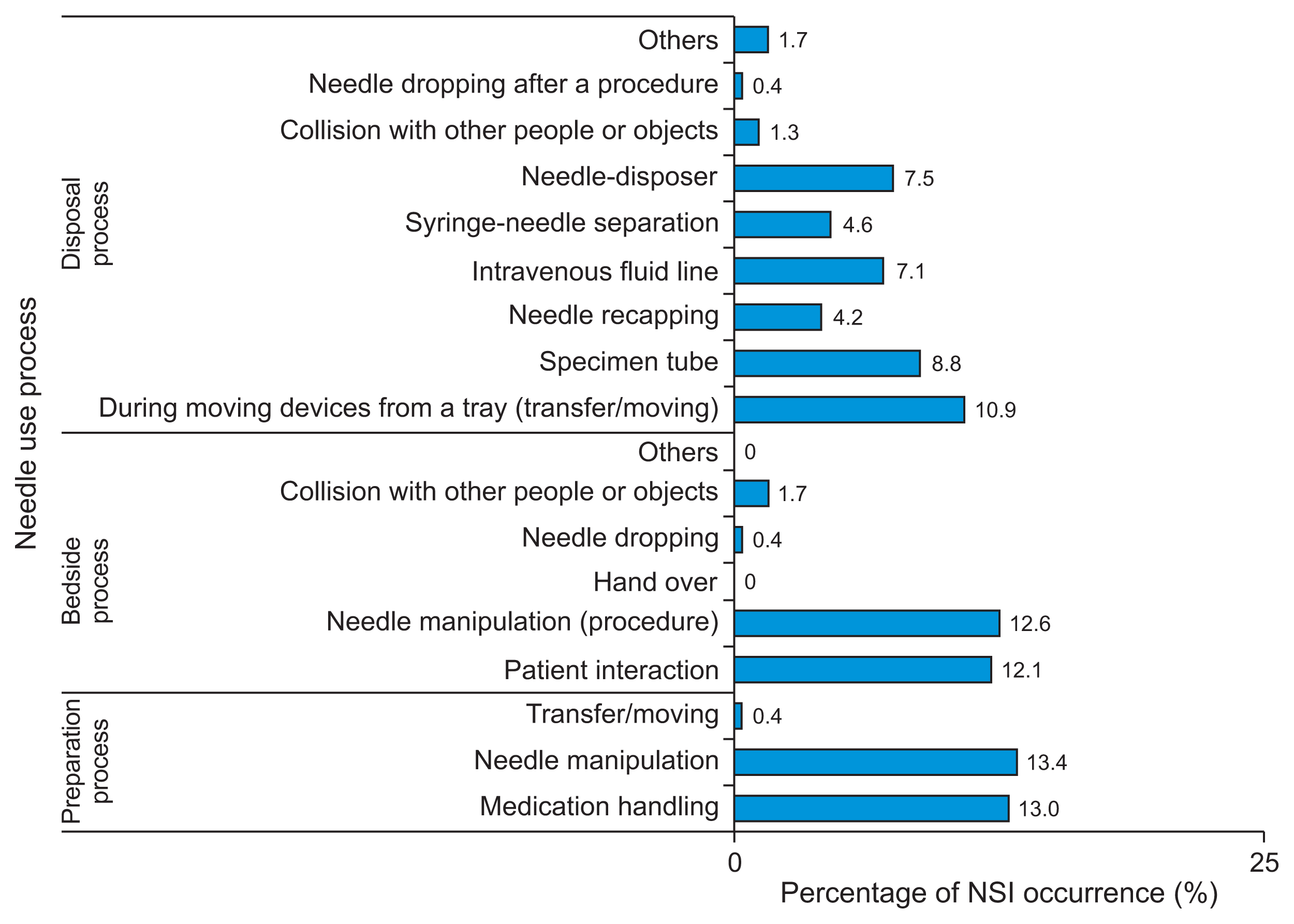1. van der Molen HF, Zwinderman KA, Sluiter JK, Frings-Dresen MH. Better effect of the use of a needle safety device in combination with an interactive workshop to prevent needle stick injuries. Saf Sci. 2011; 49(8–9):1180–6.

2. Motaarefi H, Mahmoudi H, Mohammadi E, Hasanpour-Dehkordi A. Factors associated with needlestick injuries in health care occupations: a systematic review. J Clin Diagn Res. 2016; 10(8):IE01–4.

3. Bouya S, Balouchi A, Rafiemanesh H, Amirshahi M, Dastres M, Moghadam MP, et al. Global prevalence and device related causes of needle stick injuries among health care workers: a systematic review and meta-analysis. Ann Glob Health. 2020; 86(1):35.

4. Talaat M, Kandeel A, El-Shoubary W, Bodenschatz C, Khairy I, Oun S, et al. Occupational exposure to need-lestick injuries and hepatitis B vaccination coverage among health care workers in Egypt. Am J Infect Control. 2003; 31(8):469–74.

5. Hassanpour Dehkordi A, Khaledi Far A. Effect of exercise training on the quality of life and echocardiography parameter of systolic function in patients with chronic heart failure: a randomized trial. Asian J Sports Med. 2015; 6(1):e22643.

6. Tadesse M, Tadesse T. Epidemiology of needlestick injuries among health-care workers in Awassa City, Southern Ethiopia. Trop Doct. 2010; 40(2):111–3.

7. Wilburn SQ, Eijkemans G. Preventing needlestick injuries among healthcare workers: a WHO-ICN collaboration. Int J Occup Environ Health. 2004; 10(4):451–6.

10. Grimmond T, Rings T, Taylor C, Creech R, Kampen R, Kable W, et al. Sharps injury reduction using Sharpsmart: a reusable sharps management system. J Hosp Infect. 2003; 54(3):232–8.
11. Alhazmi RA, Parker RD, Wen S. Needlestick injuries among emergency medical services providers in urban and rural areas. J Community Health. 2018; 43(3):518–23.

12. Serinken M, Karcioglu O, Kutlu SS, Sener S, Keysan MK. A survey of needlesticks and sharp instrument injuries in emergency health care in Turkey. J Emerg Nurs. 2009; 35:205–10.

13. Guo YL, Shiao J, Chuang YC, Huang KY. Needlestick and sharps injuries among health-care workers in Taiwan. Epidemiol Infect. 1999; 122(2):259–65.

14. Hersey JC, Martin LS. Use of infection control guidelines by workers in healthcare facilities to prevent occupational transmission of HBV and HIV: results from a national survey. Infect Control Hosp Epidemiol. 1994; 15(4 Pt 1):243–52.

15. Bilski B. Needlestick injuries in nurses: the Poznan study. Int J Occup Med Environ Health. 2005; 18(3):251–4.
16. Adams D, Elliott TS. Safety-engineered needle devices: evaluation prior to introduction is essential. J Hosp Infect. 2011; 79(2):174–5.

17. Hollnagel E. The ETTO principle: efficiency-thoroughness trade-off: why things that go right sometimes go wrong. Farnham, UK: Ashgate;2009.
18. McCormick RD, Meisch MG, Ircink FG, Maki DG. Epidemiology of hospital sharps injuries: a 14-year prospective study in the pre-AIDS and AIDS eras. Am J Med. 1991; 91(3B):301S–307S.

19. Haiduven DJ, Phillips ES, Clemons KV, Stevens DA. Percutaneous injury analysis: consistent categorization, effective reduction methods, and future strategies. Infect Control Hosp Epidemiol. 1995; 16:582–9.





 PDF
PDF Citation
Citation Print
Print







 XML Download
XML Download